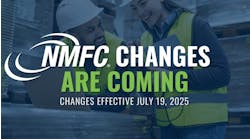A conflux of factors, from the need to add freight and drivers as well as address potential taxation issues, is expected to drive an increase in merger and acquisition (M&A) activity within the trucking industry as 2012 draws to a close.
Transport Capital Partners (TCP) for example noted in its Business Expectations Survey for the third quarter that the 52% of carriers in its poll said they are interested in making a strategic acquisition: an all-time high figure for the four years TCP has conducted its quarterly poll, noted Richard Mikes, a TCP partner and leader of the firm’s survey efforts.
“A lot of fleets buy and sell for different reason, but what we’re seeing now is that there are more strategic buyers in the market versus purely financial buyers,” he told Fleet Owner.
“You’re seeing carriers looking to acquire customer portfolios to build their freight volumes, thus increasing revenues and profits,” Mikes explained. “And they are also looking at acquisitions as a way to add drivers, especially as the demographics of driver recruiting are running against the trucking industry now.”
Those are just some of the reasons Celadon Trucking Services – a wholly-owned subsidiary of Celadon Group – cited concerning its recently announced deal to purchase a portion of the operating equipment of Robinson Transport, Inc., based in Columbus, OH, , as well a similar deal struck with USA Dry Van Logistics, LLC, based in McAllen, TX, back in August.
“Celadon’s approach in the [Robinson] transaction is to increase our density in traffic lanes in and out of the Midwest and reinforce our driver pool,” noted Paul Will, president and COO of Celadon Trucking, in a statement. “Their footprint has tremendous potential to supplement our existing business, expand our network coverage and further accelerate our overall growth plans.”
The same strategy lay behind Celadon’s August deal with USA Dry Van, which aims to boost volume on Celadon’s primary traffic lanes between the U.S. and Mexico as well as again reinforce its driver pool.
“Our companies also share a very similar, overlapping customer account base,” Will noted. “And as we have stated with previous acquisitions, we expect to assimilate many of these customers, as well as a portion of the USA Dry Van driver pool, within our operations efficiently and further improve asset productivity.”
TCP’s quarterly survey also determined that larger carriers with over $25 million in revenue are expressing more interest than smaller carriers in M&A activity versus smaller carriers with a 57.6% to 42.4% split, though Steven Dutro, another TCP partner, stressed that also shows a large number of small carriers remain interested in such strategic efforts remains high.
“The ratio of buyers to sellers is at an all-time high in this survey [as] buyers are searching for opportunities for good business and drivers in a field of diminishing sellers who see continued slow growth in volumes,” Dutro noted.
Taxation concerns are also helping drive M&A activity, he added. “TCP has seen more owners seeking to sell their company by year-end to ensure they receive current income tax rates on the sale,” noted Dutro. “Although time is short, both strategic buyers and financial buyers are active. If sellers move quickly and at market price, attractive operations can be sold by year end.”
TCP’s Mikes said the taxation concerns on the part of trucking company owners revolves around potential increases to the temporary 15% capital gains tax rate that Congress to date hasn’t renewed.
“The concern there is that nobody knows where that rate will go, so there’s the potential that – if it’s equalized with income tax rates – the amount of capital gains tax an owner might bear could double,” he noted.
The M&A push isn’t just limited to the trucking industry, either, as global consulting firm PricewaterhouseCoopers (PwC) noted in its fifth annual study of the global automotive supplier market that M&A activity is anticipated to remain at a near record high in 2012, with about 270 automotive supplier deals projected to occur worldwide.
"During the last 12 months, global auto suppliers, particularly from North America and China, have been targeting European competitors, predominately in powertrain subsystems," noted Dietmar Ostermann, PwC's global automotive advisory leader and an author of the form’s study, entitled Consolidation in the Global Automotive Supply Industry 2012.
Another key finding from PwC’s research is that European, North American, Japanese and South Korean automotive suppliers have not returned to pre-crises capital investment (capex) levels. Capex as a percent of sales topped 5.1% for the top Global 100 suppliers in 2008, then dipped to an all-time low of 3.6% in 2010 – yet only recovered to 4.1% by 2011. By contrast, Chinese suppliers have increased their capex spending from 7.1% to 10.5% in the same timeframe.
"When working with our OEM clients on supply chain issues, we hear that supplier capacity in many markets outside of Europe is tight, particularly in North America,” noted Ostermann. “North American automotive suppliers are not investing in more capacity in the home market, but rather in emerging markets like China. This continuous North American capacity shortage represents a potential opportunity for a number of suppliers prepared to selectively invest in the U.S. market."



